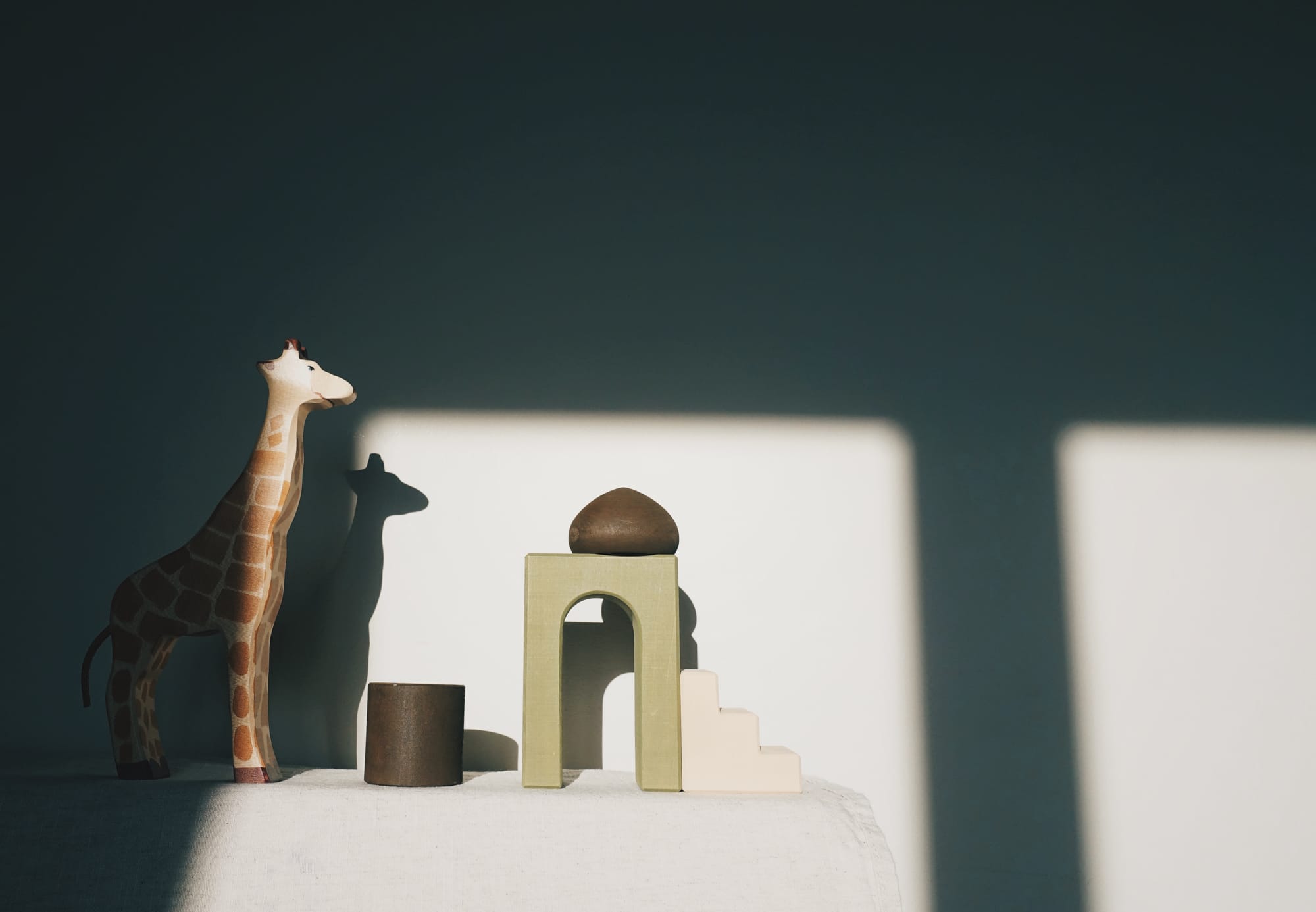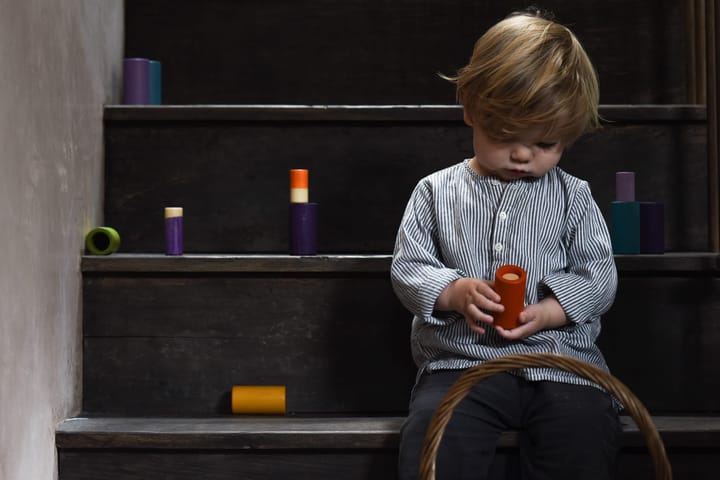Welcome to Start with the Child!
See the world through your child's eyes.

Welcome to the first edition of Start with the Child! This series is all about helping you see the world through your child’s eyes so that you can adapt activities, language, and play spaces to match her unique needs and interests. Young children learn by observing, touching, exploring, and imagining. Understanding how they experience the world allows us to create environments that nurture their curiosity, build their confidence, and invite exploration.
This week, we’ll explore how children learn in their earliest years, focusing on perception and play. As we dive into these ideas, you’ll find ways to create a home environment that makes learning through play feel natural and fun.
A quick note about the first issue.
If you’re subscribed to Patterns in Play or Screen-Free Saturdays, you may notice overlapping themes in these first editions. That’s because the environment, nudges, and habits are foundational concepts across all three newsletters. But don’t worry - starting next week, each newsletter will dive into its own unique focus:
– Start with the Child: seeing the world through your child’s eyes to support curiosity and independence.– Patterns in Play: understanding and supporting schema play for deeper, self-directed learning.– Screen-Free Saturdays: building a screen-free lifestyle through practical, engaging ideas.
Seeing the world through your child’s eyes
In the first five years, children experience a seismic transformation in how they explore, think, and play. This journey begins with sensory and physical exploration and moves toward more complex forms of thought, including imaginative and symbolic play.
Swiss psychologist Jean Piaget’s theory of developmental stages offers a useful framework to understand these shifts. While Piaget’s stages aren’t exact, they provide a broad outline of the progression from physical discovery to abstract thinking. By looking at your child’s play through the lens of these stages, you can create an environment that supports her natural curiosity and aligns with how she learns best.

Piaget’s stages of cognitive development
Piaget’s stages help us see learning from the child’s perspective, revealing how different types of play support growth at each stage. Each developmental stage highlights a shift in thinking and offers clues about the kinds of experiences that will be most engaging and meaningful.
- Sensorimotor stage (0-2 years). Babies learn through sensory experiences and body movements. They explore the world by grasping, mouthing, and observing objects. Babies are drawn to cause-and-effect activities, like shaking a rattle or dropping objects, which help them understand that they can impact their environment.
- Supporting learning. Offer safe, varied sensory materials that your baby can touch, mouth, and move. Objects with different textures, colours, and sounds engage her curiosity and allow her to experiment with cause and effect.
- Pre-operational stage (2-7 years). As children move into the toddler and preschool years, their thinking becomes more symbolic. They begin to use language, objects, and play to represent ideas, engaging in pretend play and storytelling. Though their thinking is imaginative, it’s still influenced by immediate appearances and personal perspectives. This means they might “see” a toy block as a car or a box as a spaceship.
- Supporting learning. Create spaces for imaginative play with open-ended materials—items that can transform into anything her imagination creates. Simple props like scarves, blocks, and kitchen utensils encourage her to explore ideas symbolically and build early language and social skills.
- Concrete operational stage (7-11 years). Around school age, children start to think logically about real-world experiences, understanding concepts like numbers, categories, and conservation (the idea that quantity remains the same despite changes in shape or appearance). This is the stage where children start using concrete reasoning, though they still benefit from hands-on learning.
- Supporting learning. Activities that require sorting, building, and solving practical problems - such as puzzles or constructing with blocks - help her develop logical thinking skills. Play materials that encourage categorising, counting, or understanding relationships support this stage well.

Through your child’s eyes: perception
Perception is how we make sense of the world through our senses - sight, sound, touch, taste, and smell. For children, perception is one of the first ways they explore and understand their surroundings. But a young child’s perception is different from ours: she may focus on individual details rather than the whole picture, or notice a colour, texture, or pattern that we might overlook. Understanding how her perception develops can help you design spaces and choose materials that are engaging without being overwhelming.
Big idea: For young children, a simple, uncluttered space with clear access to materials reduces overwhelm and makes play feel accessible. By designing play spaces with her perceptual needs in mind, you invite her to explore at her own pace, without frustration or overstimulation.
You probably do this already without realising it. If you think of the books you read to your child, especially during her first two years, they all had something in common: lots of white space. Simple figures on a distraction-free background, like Where’s Spot or Goodnight Moon. Even books aimed at preschoolers, like those by my beloved Shirley Hughes, feature only the essential elements.
Distraction is the enemy, even in marketing. I don’t take my own advice, of course—I should be sending you clearly laid out, well-formatted emails in order to make the key points stand out. Instead, I get carried away telling the story!
How could you use this knowledge to design your play space? How would it help you choose the type and number of toys to offer?
